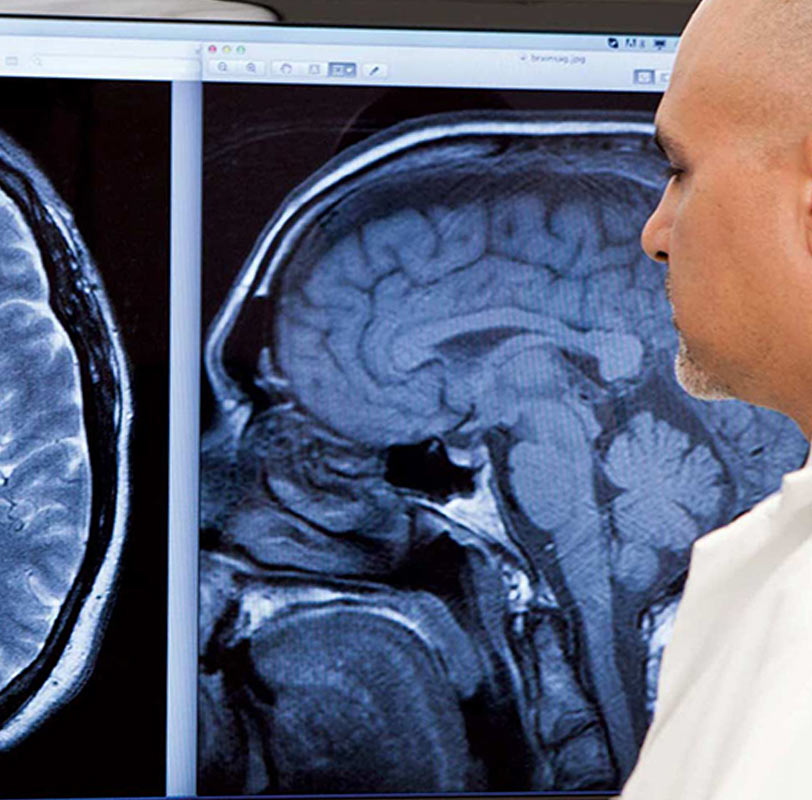Neuroradiology
Neuroradiology is a subspecialty of radiology focusing on the diagnosis and characterization of abnormalities of the central and peripheral nervous system, spine, and head and neck. Interventional radiology is also a component in neuroradiology including pain management and intravascular procedures.
Imaging modalities and exams used for Neuroradiology:
- MRI
- MR angiography
- Functional MRI
- Multi-voxel MR spectroscopy
- CT
- CT angiography (CTA)
- Conventional digital angiography
- PET and PET/CT
- Nuclear medicine SPECT scans
- Myelography followed by CT Myelography
- Discography
- Image guided biopsy
- Flouroscopic/CT guided Pain Management
Neuroradiology is commonly used to detect or evaluate:
- Tumors of the brain
- Developmental anomalies of the brain
- Vascular anomalies of the head (aneurysm)
- Disorders of the eyes and the inner ear
- Stroke
- Trauma patients
- Disease in the pituitary gland
- Certain chronic disorders of the nervous system, such as multiple sclerosis
- Causes of headache


